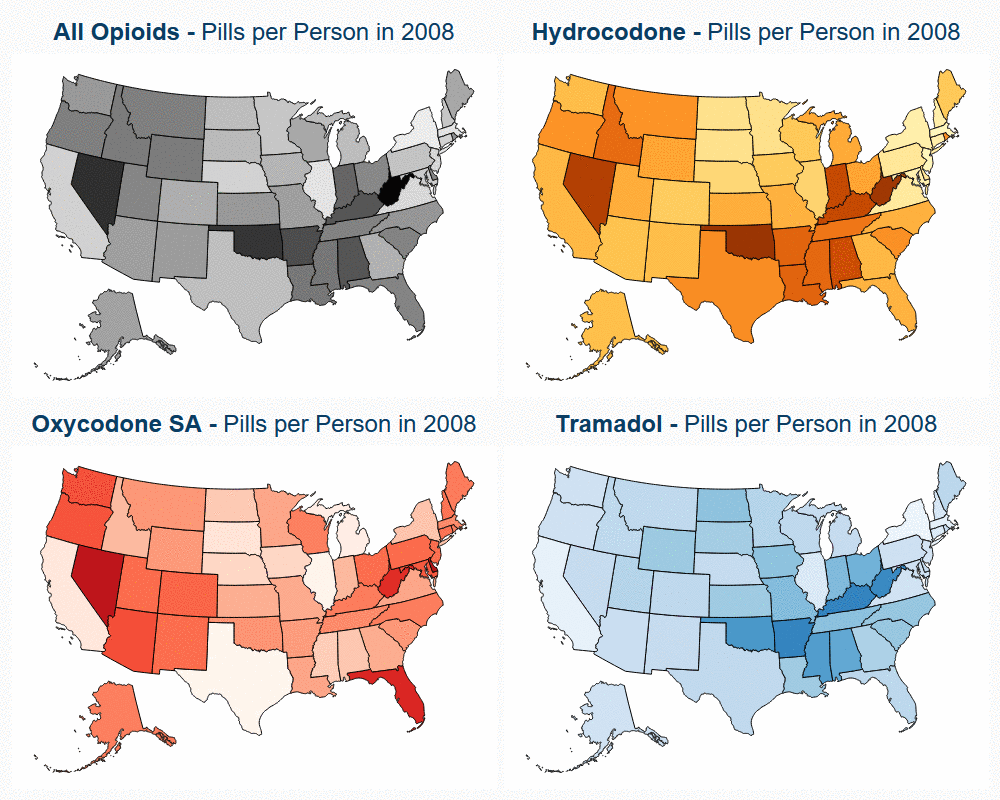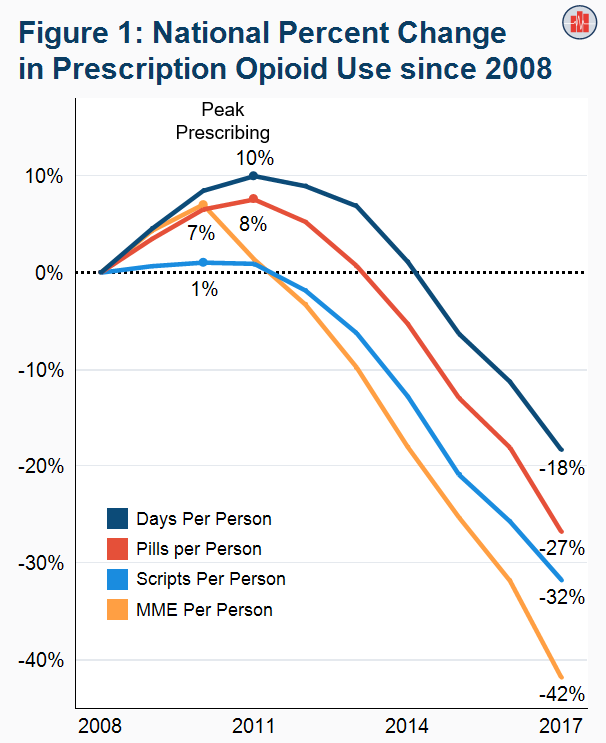Opioids
-
State Variation in Opioid Prescribing over 10 Years
 Read more: State Variation in Opioid Prescribing over 10 Years
Read more: State Variation in Opioid Prescribing over 10 YearsChanges in opioid utilization correlated with state-level policy changes aimed at decreasing opioid prescription rates. Previous research by HCCI illustrated that national opioid utilization in pills per person fell 27% between the years of 2008 and 2017, driven by declines in the use of hydrocodone (Vicodin). In addition to giving insight into prescription opioid utilization…
-
Opioid Prescriptions Declined 32% for the Commercially Insured over 10 Years (2008 to 2017)
 Read more: Opioid Prescriptions Declined 32% for the Commercially Insured over 10 Years (2008 to 2017)
Read more: Opioid Prescriptions Declined 32% for the Commercially Insured over 10 Years (2008 to 2017)Among people who get health insurance from their employers (56% of the population in 2017), prescription opioid use peaked in 2010/2011 and declined every year from 2012 to 2017. In a new study using the Health Care Cost Institute’s commercial claims data from 2008 to 2017, we observed a decline regardless of how utilization was…
-
Workers in low income counties more likely to be long-term opioid users
 Read more: Workers in low income counties more likely to be long-term opioid users
Read more: Workers in low income counties more likely to be long-term opioid usersPast literature has found links between higher opioid use and local economic conditions for people enrolled in public health programs, but there has been little discussion of whether this relationship occurs among the privately insured. Using HCCI claims data and county level income data from the US Census Bureau, we examined how a county’s median…
